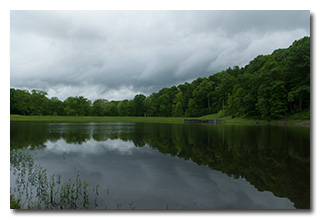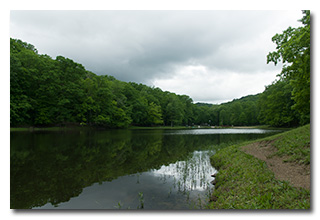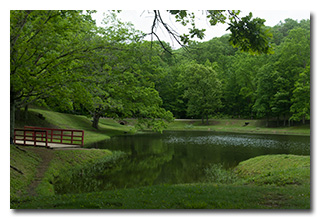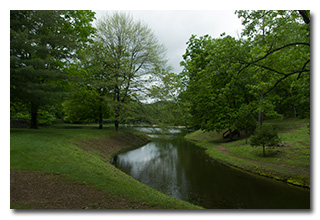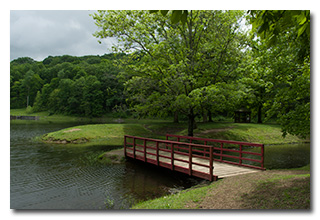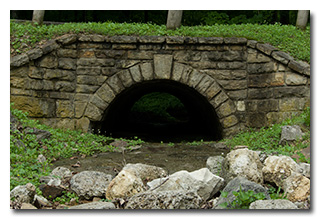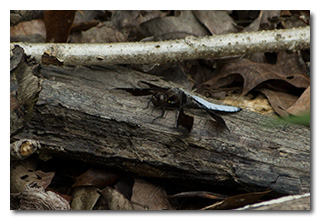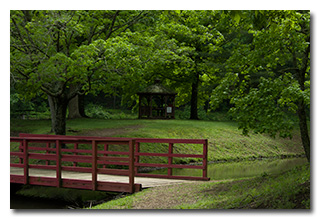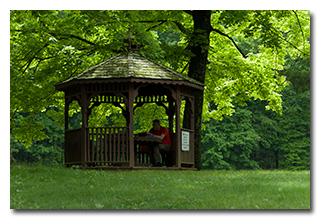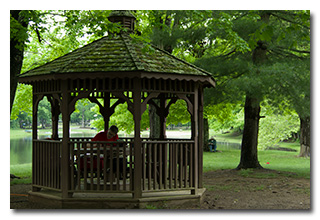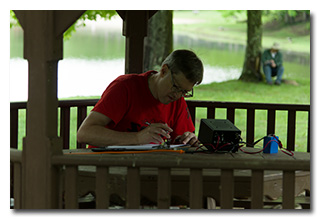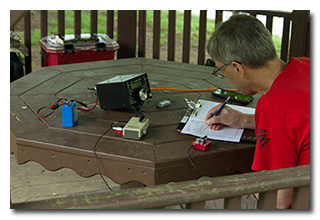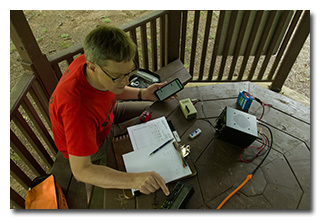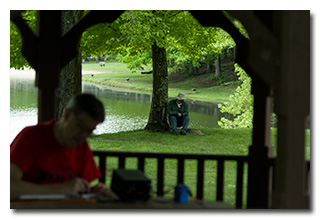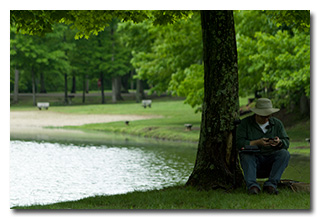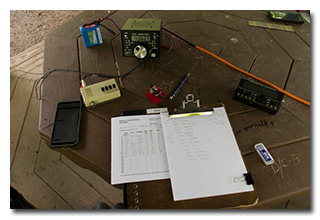
by William Eric McFadden
From the Scioto Trail State Park website:
-
Nestled within the beautiful 9,000-acre Scioto Trail State Forest in Ross County, Scioto Trail State Park’s 218 acres are a wooded refuge. Just south of Chillicothe, the ridgetops and winding forest roads offer breathtaking vistas of southern Ohio’s Scioto River Valley. The beauty and remoteness of Scioto Trail offers the best of escapes to park visitors. Camping, fishing and paddling are just a few of the adventures awaiting outdoor enthusiasts.
From the Scioto Trail State Forest website:
-
During World War I, the area that is now Scioto Trail State Forest was used as an artillery range for Camp Sherman. Seventy-five millimeter guns and six-inch howitzers were set up at the mouth of Stoney Creek on the Scioto River and fired at targets in the general area of Stewart and Caldwell lakes.
The purchase of land for the state forest began in 1922, and most of the present forest area was purchased by 1937. The first 9,088 acres cost an average of $7.70 per acre. The forest was named after the Native American trail that ran from what is now Chillicothe to Portsmouth. They called it the Scioto Trail. Route 23 follows the path of the trail. The major development of the area took place in the 1930s when the Civilian Conservation Corps built most of the roads, lakes and early recreational facilities. The forest now covers 9,600 acres.
Scioto Trail State Forest maintains 26 miles of bridle trails for day use by horseback riders and hikers. Mountain bikes are also permitted on these trails.
Six miles of paved roads and 18 miles of gravel roads provide good access to all areas of the forest. Scenic vistas and overlooks on several of the roads attract many visitors year-round, but especially during the fall when the leaves are turning color.
Populations of deer, wild turkey, squirrel and grouse encourage many hunters to pursue their favorite sport at Scioto Trail State Forest. Mushroom hunting in the spring is attracting more and more visitors to the forest each year.
The 250-acre Scioto Trail State Park consists of two areas in the middle of the state forest. Two 15-acre lakes, a campground, two primitive camping areas, picnic areas, trails and a sled hill are all located within the park.
Pictures
- Caldwell Lake: 1 | 2 | 3 | 4 | 5 | 6 (photos by Miles McFadden)
- A stone culvert (photo by Miles McFadden)
- Dragonfly (photo by Miles McFadden)
- The Gazebo (photo by Miles McFadden)
- Eric operating: 1 | 2 | 3 | 4 | 5 (photos by Miles McFadden)
- Thomas operating: 1 | 2 (photos by Miles McFadden
- Eric's station featuring K4SWL's QRP Plus
Description
While enroute to Hamvention and QRP ARCI's Four Days in May, and on a day that turned out to have pretty poor HF band conditions, three members of the Southeast Ohio Radio Adventure Team stopped and performed successful simultaneous activations of Scioto Trail State Park (US-1990) and Scioto Trail State Forest (US-5448) on Gazebo Island on Caldwell Lake within the state park.
Eric McFadden, WD8RIF; Miles McFadden, KD8KNC; and Thomas Witherspoon, K4SWL, arrived at Gazebo Lake at about 1800 UTC to find both the parking area and the island itself to be unoccupied. The weather being beautiful, the trio decided to perform their activations on the island, Eric choosing the gazebo for his operating location, and Thomas choosing a shady spot beneath a tree a short distance away for his operating location.
The cell-signal at this location allowed Eric and Thomas to use the POTA Spots website (link) to spot themselves and to look for possible park-to-park (P2P) QSOs.
Having owned an Index Labs QRP Plus for about twelve years between 1995 and 2007, Eric was delighted to be given the chance to operate Tom's recently-acquired original QRP Plus for his activation. Thomas also provided Eric with a JNCRadio MC-750 vertical antenna which Tom set up and configured for 20m. Eric was on the air at 1828 UTC.
After refamiliarizing himself with the QRP Plus—including downloading the QRP Plus manual to his phone so he could remind himself how to change from SSB mode to CW—Eric began his operations by finding himself a clear frequency to run on 20m, spotting himself to POTA Spots, and beginning to call "CQ POTA". His first QSO came at 1837 UTC with K5SJC in Colorado. His fifth QSO came eleven minutes later at 1848 UTC with KC4QX in Florida. This run included a P2P QSO with N4CD who was activating Spring Creek Forest State Preserve (US-4423) in Texas and QSOs with operators located in Colorado, Louisiana, Oklahoma, Texas, and Florida.
When responses to his calls of "CQ" stopped, Eric used his Elecraft KX2 and a dummy load to complete a P2P QSO on 40m with Thomas.
Returning to 20m, at 1856 UTC Eric completed a QSO with KI5EE in Louisiana.
After several minutes of no success at calling "CQ", at 1904 UTC Eric used his Elecraft KX2 and dummy load to complete a second P2P QSO with Thomas, this time on 15m.
Returning yet again to 20m to attempt to run a frequency, at 1906 UTC Eric completed a QSO with K5LG and at 1907 UTC he completed a QSO with KE5AN, both of whom were in Arkansas.
After checking POTA Spots, at 1913 UTC Eric completed a P2P QSO with N5ILQ who was activating Lake Elmer State Fishing Lake (US-7686) in Oklahoma.
Eric finished his activation by completing a third P2P QSO with Thomas, this time on 20m and using the QRP Plus and MC-750 vertical.
Thomas's report will be available soon and will be linked here.
Miles did not operate but helped with station set-up and tear-down, and he did nearly all of the activation photography.
In all, Eric made twelve QSOs, including five P2P QSOs. All of Eric's QSOs were CW and were made at the 5-watt level.
Eric also submitted his log to the World Wide Flora and Fauna in Amateur Radio (WWFF; link) program for Scioto Trail State Park.
(return)

